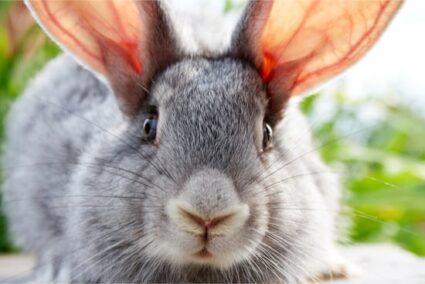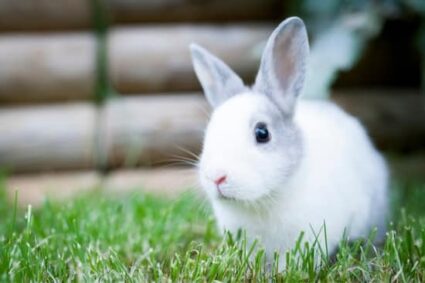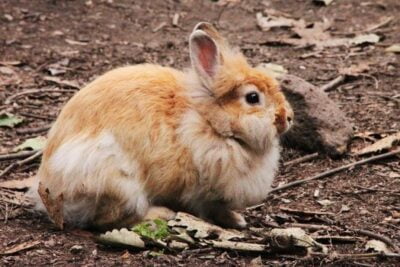Owners often notice color changes to a rabbit’s fur. Rabbits appear to change color entirely, sometimes several times a year. This can be disconcerting as it may look like your rabbit has undergone a complete change or there may be a yet-to-be-detected health problem.
Color changes are an evolutionary survival mechanism, borne of a rabbit’s status as prey animals. Rabbits molt several times a year. Their fur initially grows and then grows back a different shade, camouflaging them from potential predators. The only time to be cautious is if your rabbit’s fur is turning yellow, which can be due to urine staining.
We will look at molting in rabbits, and what it may mean. This will explain why a change in color to a rabbit’s fur is usually nothing to worry about.
Can Rabbits Change Color Suddenly?
Rabbits frequently change color over the course of the year. Also, a baby rabbit may change color multiple times before it reaches adulthood. It’s the result of your rabbit molting and adapting to the change in seasons.
A rabbit is born without any fur. It will experience its first molt at the age of 4-5 months. Rabbits shed baby fur and grow an ‘immediate coat’. This will not necessarily be the same color as its baby coat. Around 3 months after this takes place, the rabbit will molt again and grow its adult coat.
Once a rabbit has its adult coat, it will not necessarily stay the same color. Rabbits molt every 3 months. This coincides with the change in the seasons and maintains the appropriate body temperature. A rabbit will need a thicker coat in the winter than in the summer.
Also, a rabbit’s fur may change color for its protection. This is more common in wild than domestic animals, but it applies to all rabbits. It’s a natural reaction to light exposure. In the summer, a rabbit will enjoy more sunshine and longer days. This triggers a response in the rabbit’s body, promoting the production of melanin.
A rabbit will have darker fur during the summer. In the winter, as the days grow shorter, less melanin is produced. This, in turn, means that a rabbit’s new coat will lack pigmentation. In snowy climes, it’s quite common for a rabbit’s fur to turn completely white.
How Do Rabbit’s Molt?
As stated, rabbits molt every 3 months, whenever the seasons change. The process can last anywhere between 2 and 6 weeks.
Molting often starts at the head and slowly moves down the body. However, no two rabbits are the same. Some rabbits lose all their fur at once, while others will shed fur in clumps. This means that you may notice bald patches on your rabbit’s coat during shedding. As long as the fur grows back quickly, this is not a cause for concern.
However, if the bald patches last longer than a day or two, this suggests that your rabbit is tearing out its fur, possibly due to stress. Rabbits are easily stressed, but you can assist your pet with the grooming process. Use a wide-toothed comb with blunt ends. Combs and brushes with sharp edges are too harsh on a rabbit’s sensitive skin.
Rabbits groom themselves regularly, especially while molting. This means that they can ingest hairballs. This is especially likely during the summer when rabbits shed substantial amounts of fur. Ensure that your rabbit has plenty of hay to eat as this will ease its digestion.
If you want to speed up the process of your rabbit’s molting, add some extra protein to its diet. The right amount of protein will help your rabbit work quickly through the shedding process. However, too much protein will slow down its digestion. This can be dangerous as rabbits are incapable of vomiting, especially during molting. If a rabbit is not digesting its food, any fur that it swallows can become trapped.
Rabbit’s Fur Is Getting Lighter
A rabbit’s fur will lighten during the winter months. The less exposure a rabbit has to the sun, the lighter its fur will become. This will often be very noticeable as a rabbit’s winter coat can be very thick. This is also a defense mechanism, so your rabbit can blend into its environment easier.
According to National Geographic, snowshoe hairs have brown fur during the summer. When the winter arrives, they shed this coat and become completely white. This ensures that predators cannot easily spot the hare in the snow. When the spring arrives and the snow melts, the hare molts again and returns to brown. This coloring is a reaction to their natural environment. The snowshoe hare is found dwelling in dense forestry.
It can sometimes be challenging to manage a rabbit’s sunlight exposure during the winter. A domesticated rabbit that’s living in a hutch has less exposure to sunlight than a wild rabbit.

Rabbit’s Fur Is Getting Darker
Just as a rabbit’s fur lightens during the winter, it darkens during the summer. This is due to the melanin in their body reacting to sunshine.
A rabbit will shed a substantial amount of fur during its summer molt. This could leave it vulnerable to the cold. Dark fur absorbs the sun better than light fur, ensuring that your rabbit maintains a comfortable temperature.
Rabbits are crepuscular, meaning that they are most active at dawn and dusk. Many domesticated rabbits evolve to become diurnal (active during the day). This is a reaction to being born in captivity.
Owners will notice that baby rabbits may darken as they age. This is all down to sun exposure. A fair-haired human infant may develop brown hair as a toddler, and rabbits are no different in this regard.
Rabbit’s Fur Has Turned Yellow
There are 2 reasons why a rabbit’s fur turns yellow:
Too Much Sunlight
A darker fur coat will start to ‘rust’ when exposed to direct sunlight. It’s essential that the hutch has a shaded area that your rabbit can retreat to. Rabbits know what temperature is optimal. If you provide a shaded area, your rabbit will instinctually make use of it.
Urine-Stained Fur
The yellowing that you see is staining from your rabbit’s urine. Rabbits tend to enjoy spending time in their litter box. It’s not uncommon to find a rabbit eating hay while eliminating.
This can forge a link between elimination and eating in your rabbit’s mind. You may find it hopping into its litter box to eat. Many rabbits also like to play, and even sleep, in their litter boxes. Unfortunately, this means that rabbits are exposed to their own pee.

Bathing a rabbit is not advised as the sudden shock can lead to a heart attack. You can perform some wet spot cleaning. Just mix a small amount of white vinegar with water, dabbing it on the stained fur.
Leaving urine stains too long can lead to urine scalding. This involves the urine burning the rabbit’s skin. This causes the fur to fall out, which is very painful. In addition, urine stains in your rabbit’s fur can attract flies. If these insects lay eggs, it leads to flystrike. Flystrike involves these eggs hatching maggots, which can devour a rabbit’s skin.
Rabbit’s Fur Is Turning Gray
Some rabbits have a gray tone to their fur. However, rabbits also gray as they age. A rabbit is considered to be elderly once it’s 5 years old. The lifespan for a healthy domesticated rabbit can be up to 14 years. Signs that your rabbit is growing older include:
- Less mobility and more time spent napping
- Fluctuations in weight. Some rabbits grow obese as they are eating the same, but exercising less. Other senior rabbits lose interest in food
- Lack of interest in grooming or falling over while doing so
- Eliminating outside the litter box. This will be because it’s hard for an arthritic rabbit to climb into a litter box
- Abscesses on the skin
- Reduced responsiveness due to failing eyesight and hearing
A rabbit changing color is perfectly natural. If your rabbit remains the same color throughout its life, this is a genetic anomaly. Provided your rabbit’s fur is not yellow, it’s rarely at risk of any underlying health issues.
When your rabbit starts to change shade, you should assist with its grooming, It may seem that your rabbit is permanently molting, but it’s essential care, especially for longhaired breeds, such as lionheads.
Your rabbit’s fur changes color for a reason. It’s all down to biology, and part of its annual hormone cycle. There’s no need cause for concern when your white rabbit develops brown patches during the Spring or turns a lighter shade during the Winter.


Hello our dutch rabbits fur is lightening on her back in almost a diamond shape..shes buff tan with black and white scattered patches very sweet temperament . she’s out of her cage for 2 hrs in the morning to exercise. She’s very active and blinkies all over. Comes when shes called and loves nose scratches. She greets us with happy bounces. Her diet is hay. Some pellets. Daily fresh thyme, rosemary and parsley .mixed in her hay . we limit Apple’s and bananas as snacks. She is wild about bananas. Fresh water daily. Shes out just before dinner for an hour in the evening. So we feel she’s healthy and happy. Why is her fur lightening ?
Hi did you ever get a response? I’m having the same problem with my rabbit right now